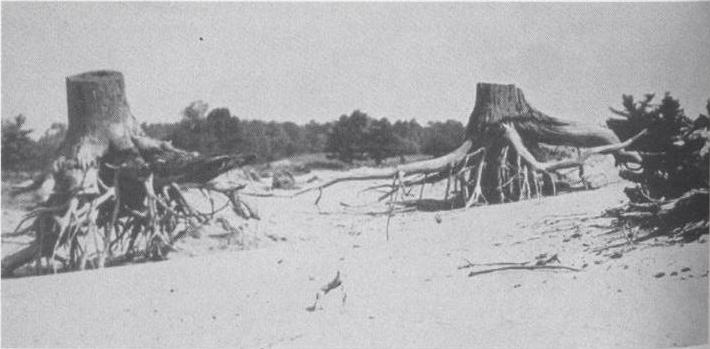Tree Harvesting at Durham Regional Forest
Bringing Back the Forest
Durham Regional Forest hasn’t always been as big and beautiful as it is today! In fact, 100 years ago, it wasn’t a forest at all. The original, natural forest was completely cleared for agricultural use by settlers in the early 1900’s. Due to poor soil conditions and subsequent lack of tree cover it was not suitable for crops and was prone to soil erosion. Settlers realized that their land was now unusable for farming, so it was abandoned.
In 1926 the Ontario Government, through its Agreement Forest Program, began re-planting these deserted areas with pioneer species such as red, white and Scot’s pine. These species are adapted to growing in harsh, dry conditions and were able to grow on the heavily disturbed site. Some of these species can still be seen in the forest today.
Durham Regional Forest has always been a “working forest” as its managers work to restore the area to its natural, pre-settlement condition. In order to achieve this, many selection harvests have occurred over the last century to convert it from a plantation back to a more natural condition.
What is tree harvesting?
Forest managers have been harvesting trees in Durham Regional Forest for decades with the intention of converting the forest from a human-created pine plantation to a natural deciduous forest.
First, an in-depth inventory of tree species is conducted by our forestry team. The inventory will tell us the species composition, number, size and quality of the trees in the forest. This information is used by a Registered Professional Forester (RPF) who writes a silvicultural prescription for the stand. This prescription will provide instructions to a crew of specially trained tree markers and will indicate how many trees are to be removed.
Tree markers are then responsible for marking trees for removal. Trees that are unhealthy, declining, or poor quality are often chosen for removal. They also analyze each tree for wildlife features such as stick nests or cavities. Trees with these features are marked with a different coloured paint and protected. Often, the adjacent trees are left standing to avoid disturbing the area.
Finally, the marked trees are carefully removed from the forest and used to produce dimensional lumber, firewood or utility poles. Revenues from the timber sale are used to support development and maintenance of infrastructure and trails at the forest.
Why do we do tree harvests?
Sustainability
Natural mixed-hardwood forests rely on small-scale natural disturbances, such as lightning, fire, wind, ice storms and disease, to kill individual trees or groups of trees. This disturbance provides the next generation of trees with the light and the space required to grow. Considering Durham Regional Forest’s heavy use by people and proximity to urban areas, disturbances such as fire are not allowed to occur as they would naturally. Forest management operations are designed to emulate natural disturbances to open up the forest canopy for regeneration. Removing a selection of overstory trees, allows additional light to reach the forest floor assisting in germination of new seedlings.
Healthy Habitats
Good forest management practices help ensure that species living in the forest can thrive by maintaining or enhancing existing habitats. These best practices ensure that a variety of stand ages and conditions exist to support a wide diversity of wildlife. It also promotes the identification and protection of rare species and critical habitats.
Public Safety
When equipment is on site harvesting trees, it is often a good time to remove dead or diseased trees from trail sides and parking areas. If these trees are left alone they can pose a danger to visitors using our trails for recreational and educational purposes.
![]() Who to Contact
Who to Contact
Paul Cottenden
Forest Technician
✆ 905-895-1281
✆ 1-800-465-0437 Toll free
✉ p.cottenden@LSRCA.on.ca
![]() Related Information
Related Information

